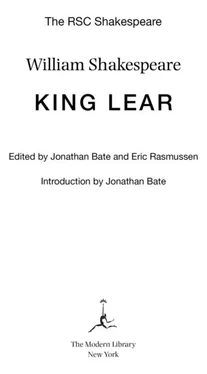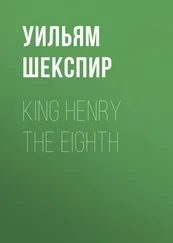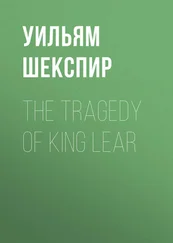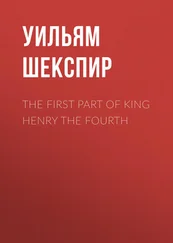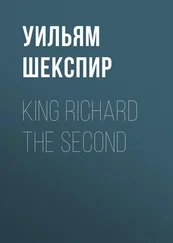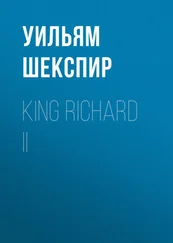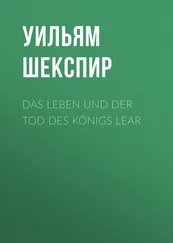уильям шекспир - King Lear
Здесь есть возможность читать онлайн «уильям шекспир - King Lear» весь текст электронной книги совершенно бесплатно (целиком полную версию без сокращений). В некоторых случаях можно слушать аудио, скачать через торрент в формате fb2 и присутствует краткое содержание. Год выпуска: 2011, ISBN: 2011, Издательство: Random House Publishing Group, Жанр: Старинная литература, на английском языке. Описание произведения, (предисловие) а так же отзывы посетителей доступны на портале библиотеки ЛибКат.
- Название:King Lear
- Автор:
- Издательство:Random House Publishing Group
- Жанр:
- Год:2011
- ISBN:978-1-58836-828-7
- Рейтинг книги:3 / 5. Голосов: 1
-
Избранное:Добавить в избранное
- Отзывы:
-
Ваша оценка:
- 60
- 1
- 2
- 3
- 4
- 5
King Lear: краткое содержание, описание и аннотация
Предлагаем к чтению аннотацию, описание, краткое содержание или предисловие (зависит от того, что написал сам автор книги «King Lear»). Если вы не нашли необходимую информацию о книге — напишите в комментариях, мы постараемся отыскать её.
King Lear — читать онлайн бесплатно полную книгу (весь текст) целиком
Ниже представлен текст книги, разбитый по страницам. Система сохранения места последней прочитанной страницы, позволяет с удобством читать онлайн бесплатно книгу «King Lear», без необходимости каждый раз заново искать на чём Вы остановились. Поставьте закладку, и сможете в любой момент перейти на страницу, на которой закончили чтение.
Интервал:
Закладка:
KEY FACTS
MAJOR PARTS: (with percentage of lines/number of speeches/scenes on stage) Lear (22%/188/10), Edgar (11%/98/10), Earl of Kent (11%/127/12), Earl of Gloucester (10%/118/12), Edmund (9%/79/9), Fool (7%/58/6), Goneril (6%/53/8), Regan (5%/73/8), Duke of Albany (5%/58/5), Cordelia (3%/31/4), Duke of Cornwall (3%/63/5), Oswald (2%/38/7).
LINGUISTIC MEDIUM:75% verse, 25% prose.
DATE:1605–6. Performed at court December 1606; draws on old Leir play (published 1605); seems to refer to eclipses of September and October 1605; borrows from books by Samuel Harsnett and John Florio that were published in 1603.
SOURCES:Based on The True Chronicle Historie of King Leir and his Three Daughters , an old play of unknown authorship that was in the London theatrical repertoire in the early 1590s, but makes many changes, including alteration of providential Christian to pagan language and the introduction of a tragic ending. The Lear story also appeared in other sources familiar to Shakespeare: The Mirrour for Magistrates (edition of 1574), Holinshed’s Chronicles (1587), and book 2 canto 10 of Edmund Spenser’s epic poem The Faerie Queene (1590). In all versions of the story before Shakespeare’s, there is a “romance” ending whereby the old king is restored to his daughter Cordelia and to the throne. The Gloucester subplot is derived from the story of the Paphlagonian king in book 2 chapter 10 of The Countess of Pembroke’s Arcadia by Sir Philip Sidney (1590): a blind old man is led to the top of a cliff from where he contemplates suicide because he has been deceived by his bastard son; the good son returns and encounters the bad one in a chivalric duel. The story was intended to exemplify both “true natural goodness” and “wretched ungratefulness”; a few chapters later (2.15), Sidney tells of a different credulous king who is tricked into mistrusting his virtuous son. The characters of “Poor Tom” and the Fool are entirely Shakespearean creations, though some of the language of demonic possession feigned by Edgar is borrowed from Samuel Harsnett’s Declaration of Egregious Popish Impostures (1603), a work of propaganda about Catholic plots and faked exorcisms that Shakespeare probably read because of the Stratford origins of one of the exorcizing priests, Robert Debdale. The language of the play and some of its philosophical ideas reveal that Shakespeare had also been reading The Essayes of Montaigne in John Florio’s English translation (1603).
TEXT:Published in Quarto in 1608 under the title M. William Shakspeare: HIS True Chronicle Historie of the life and death of King LEAR and his three Daughters. With the vnfortunate life of Edgar, sonne and heire to the Earle of Gloster, and his sullen and assumed humor of TOM of Bedlam: As it was played before the Kings Maiestie at Whitehall vpon S. Stephans night in Christmas Hollidayes. By his Maiesties seruants playing vsually at the Gloabe on the Bancke-side . This text was very poorly printed, partly because its printer (Nicholas Okes) was unaccustomed to setting plays and also because it seems to derive from Shakespeare’s own working manuscript, which would have been difficult to read. Quarto includes about 300 lines that are not in the 1623 Folio text, which was entitled “The Tragedy of King Lear,” and has clear signs of derivation from the theatrical playbook (though, to complicate matters, the Folio printing was also influenced by a reprint of the Quarto that appeared in 1619 as one of the ten plays published by Thomas Pavier in an attempt to produce a collected Shakespeare). The Folio in turn has about 100 lines that are not in the Quarto, and nearly 1,000 lines have variations of word or phrase. The two early texts thus represent two different stages in the life of the play, with extensive revision having been carried out, either systematically or incrementally. Revisions include diminution of the prominence given to the invading French army (perhaps for political reasons), clarification of Lear’s motives for dividing his kingdom, and weakening of the role of Albany (including reassignment from him to Edgar of the play’s closing speech, and thus by implication—since it was a convention of Shakespearean tragedy that the new man in power always has the last word—of the right to rule Britain). Among the more striking cuts are the mock trial of Goneril in the hovel and the moment of compassion when loyal servants apply a palliative to Gloucester’s bleeding eyes. For centuries, editors have conflated the Quarto and Folio texts, creating a play that Shakespeare never wrote. We endorse the body of scholarship since the 1980s and the new editorial tradition in which Folio and Quarto are regarded as discrete entities. We have edited the more theatrical Folio text but have corrected its errors (which are plentiful, since much of it was set in type by “Compositor E,” the apprentice who was by far the worst printer in Isaac Jaggard’s shop). The influence of Quarto copy on the Folio is of great assistance in making these corrections. Textual notes are perforce more numerous than for any other work by Shakespeare; several hundred Quarto variants are listed. All the most significant Quarto-only passages are printed at the end of the play.
THE TRAGEDY
OF KING LEAR
LIST OF PARTS
LEAR, King of Britain
GONERIL, Lear’s eldest daughter
REGAN, Lear’s middle daughter
CORDELIA, Lear’s youngest daughter
Duke of ALBANY, Goneril’s husband
Duke of CORNWALL, Regan’s husband
King of FRANCE, suitor and later husband to Cordelia
Duke of BURGUNDY, suitor to Cordelia
Earl of KENT, later disguised as Caius
Earl of GLOUCESTER
EDGAR, Gloucester’s son, later disguised as Poor Tom
EDMUND, Gloucester’s illegitimate son
OLD MAN, Gloucester’s tenant
CURAN, Gloucester’s retainer
Lear’s FOOL
OSWALD, Goneril’s steward
GENTLEMAN, a Knight serving Lear
GENTLEMAN, attendant on Cordelia
SERVANT of Cornwall
HERALD
CAPTAIN
Knights attendant upon Lear, other Attendants, Messengers, Soldiers, Servants, and Trumpeters
Act 1 Scene 1
running scene 1
Enter Kent, Gloucester and Edmund
KENT I thought the king had more affected 1the Duke of
Albany than Cornwall.
GLOUCESTER It did always seem so to us: but now in the division
of the kingdom it appears not which of the dukes he values
most, for qualities are so weighed that curiosity in neither 5
can make choice of either’s moiety.
KENT Is not this your son, my lord?
GLOUCESTER His breeding 8, sir, hath been at my charge. I have so
often blushed to acknowledge him that now I am brazed 9to’t.
KENT I cannot conceive 10you.
GLOUCESTER Sir, this young fellow’s mother could; whereupon
she grew round-wombed and had indeed, sir, a son for her
cradle ere 13she had a husband for her bed. Do you smell a
fault 14?
KENT I cannot wish the fault undone 15, the issue of it being
so proper 16.
GLOUCESTER But I have a son, sir, by order of law, some 17year elder
than this, who yet is no dearer in my account 18, though this
knave came something saucily to the world before he was
sent for: yet was his mother fair, there was good sport at his
making and the whoreson 21must be acknowledged.— Do you
know this noble gentleman, Edmund?
EDMUND No, my lord.
GLOUCESTER My lord of Kent: remember him hereafter as my
honourable friend.
EDMUND My services to your lordship.
KENT I must love you, and sue 27to know you better.
Читать дальшеИнтервал:
Закладка:
Похожие книги на «King Lear»
Представляем Вашему вниманию похожие книги на «King Lear» списком для выбора. Мы отобрали схожую по названию и смыслу литературу в надежде предоставить читателям больше вариантов отыскать новые, интересные, ещё непрочитанные произведения.
Обсуждение, отзывы о книге «King Lear» и просто собственные мнения читателей. Оставьте ваши комментарии, напишите, что Вы думаете о произведении, его смысле или главных героях. Укажите что конкретно понравилось, а что нет, и почему Вы так считаете.
